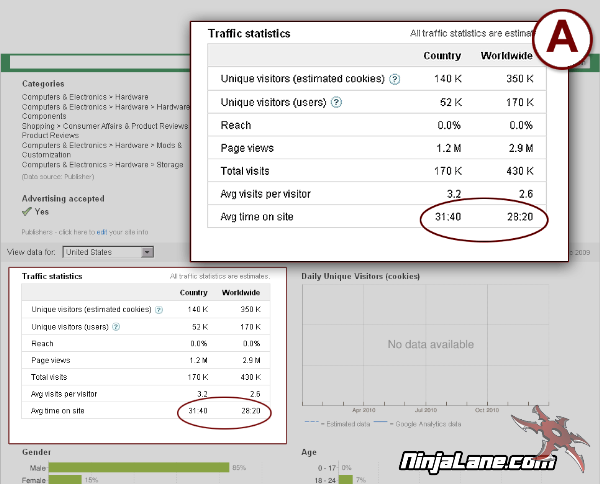After careful consideration I have decided to transfer all hardware review activities to a new domain. I purchased Hardwareasylum.com in 2012 and have been working hard to build a new and improved Ninjalane on that domain. If you are reading this you have reached one of the archived articles, news, projects and/or reviews that were left behind during the site migration.
Please update your bookmarks and be sure to visit the new and improved Ninjalane at Hardwareasylum.com
The Dark Art of Inflating Traffic
Author: Dennis Garcia
Published: Monday, January 25, 2010
More on Traffic Pumping
Web users rarely read something cover to cover; in fact most people reading this article will skim the highlights and at most read 2-3 paragraphs completely. Because of this the average time spent on a page is normally less than 30 seconds. After that, they are off to find something else. Assuming a user finds something they really want to read, like a 7 page article, then you should get at least 7 pageviews and a site time of 3.5 minutes.
Average time on site is described as such.
Average time on site is described as such.
"Time on Site is one way of measuring visit quality. If visitors spend a long time visiting your site, they may be interacting extensively with it. However, Time on Site can be misleading because visitors often leave browser windows open when they are not actually viewing or using your site."

So knowing this, why does website A have an average time on site of almost 30min?? The first thing that comes to mind is a poorly programmed traffic robot.
Keep in mind that web traffic is stateless meaning that the web server has forgotten all about you after the page has been served up. So to measure a time on website metric you have to take the time an IP address had first accessed the website and add it to the last time that IP address was seen downloading something. Simply leaving a browser open on a page is not enough, that page has to be reloaded on occasion either by clicking on something, by a javascript timer, or by a meta refresh tag.
Keep in mind that web traffic is stateless meaning that the web server has forgotten all about you after the page has been served up. So to measure a time on website metric you have to take the time an IP address had first accessed the website and add it to the last time that IP address was seen downloading something. Simply leaving a browser open on a page is not enough, that page has to be reloaded on occasion either by clicking on something, by a javascript timer, or by a meta refresh tag.

